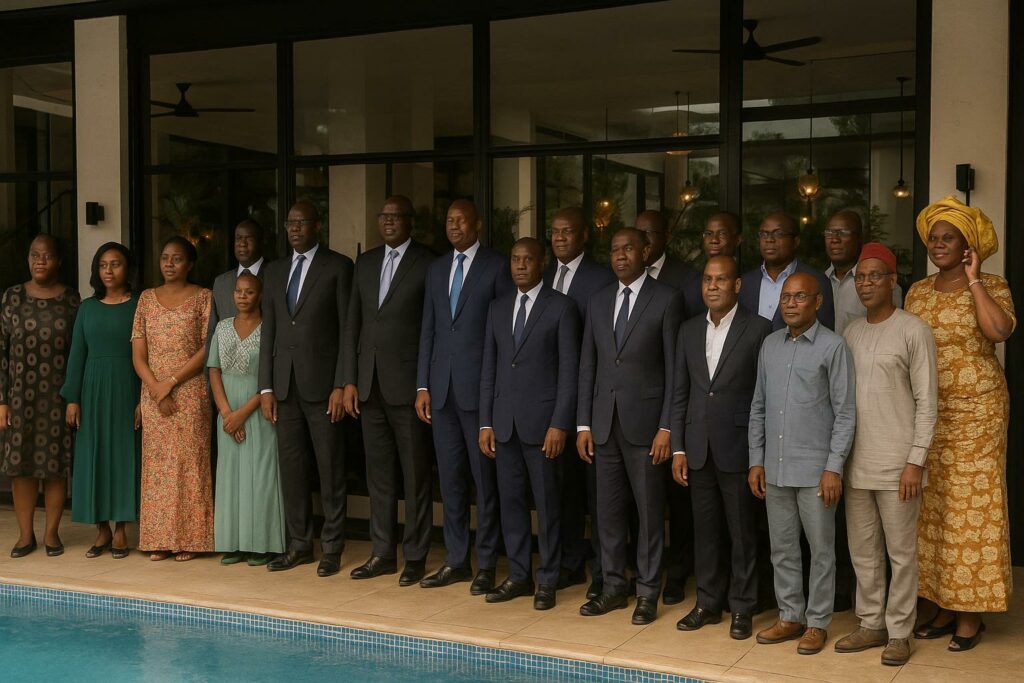Brazzaville workshop signals national mobilisation
In a conference room overlooking the banks of the Congo River, some thirty specialists from the Presidency, the Prime Minister’s office, sectoral ministries and overseas technical partners opened on 22 October a three-day workshop devoted to the plague of small ruminants, better known by its French acronym PPR. The meeting, chaired by Director-General of Livestock Kaya-Tobi, constitutes the final step before governmental endorsement of a revised National Strategic Plan for the Control and Eradication of PPR. The atmosphere was studious rather than ceremonial, as participants sifted through epidemiological graphs, budget tables and legal frameworks with a shared objective: to craft a document that is both scientifically robust and administratively workable.
Synchronising with continental and regional roadmaps
Congo’s draft strategy had already undergone several readings, yet the Brazzaville session seeks to calibrate it meticulously against three reference texts: the 2015 FAO–OIE Global Strategy that envisions worldwide PPR eradication by 2030, the African Union’s Pan-African Strategy prepared by the Inter-African Bureau for Animal Resources and the Pan-African Veterinary Vaccine Centre, and the Economic Community of Central African States’ regional framework. Each of these instruments prescribes milestones, indicators and auditing mechanisms designed to keep national programmes on schedule. By harmonising definitions of outbreak, vaccination coverage and post-vaccination surveillance, officials hope to facilitate cross-border data exchange and joint interventions along the porous northern and western frontiers.
Financing and governance under the microscope
Behind the technical vocabulary, the workshop confronts an eminently political question: how to secure predictable resources for a campaign that will extend well beyond a single fiscal cycle. The Ministry of Finance has already signalled, according to delegates present, its willingness to anchor vaccination and surveillance costs in the medium-term expenditure framework. Yet participants emphasised that public funds alone cannot shoulder the estimated bill for vaccines, cold-chain upgrades and field laboratories. Development partners, notably the European Union and the World Bank–funded Regional Disease Surveillance System Enhancement initiative, are being courted to co-finance equipment and training. A dedicated legal section of the draft plan proposes a multi-donor trust mechanism, audited annually, to guarantee transparency and maintain investor confidence.
Socio-economic stakes for rural livelihoods
PPR may be a veterinary issue, but in remote districts from Plateaux to Niari it is first and foremost a household tragedy. The highly contagious morbillivirus decimates flocks of sheep and goats that constitute the primary liquid asset for thousands of smallholders. Extension officers estimate that a single severe outbreak can wipe out up to 90 percent of caprine herds, eroding protein intake and pushing vulnerable families into distress sales of land or equipment. The draft strategy therefore couches eradication not merely as an animal-health objective, but as a pillar of food security, gender equity—women own a majority of village-level herds—and rural poverty reduction.
Communication: the soft power of disease control
One innovation of the new blueprint is a comprehensive communications plan that ranges from community radio jingles to smartphone dashboards for veterinarians. Officials conceded that previous campaigns faltered partly because herders were unaware of vaccination schedules or feared side-effects on pregnant animals. To counter misinformation, the strategy earmarks resources for culturally tailored messaging in Lingala, Kituba and local dialects, with chiefs and religious leaders acting as trusted intermediaries.
À retenir : a realistic timetable towards 2030
The revised roadmap divides national territory into epidemiological zones, each with a phased sequence of mass vaccination, targeted revaccination and sero-monitoring. By 2025, coverage should reach 80 percent in high-risk corridors, paving the way for a progressive shift from control to elimination status by 2028. A final nationwide verification campaign, supervised by external auditors, is slated for early 2030, after which Congo could formally apply to the World Organisation for Animal Health for freedom-from-PPR recognition.
Le point juridique/éco : sustaining momentum
Jurists at the workshop stressed that the effectiveness of the veterinary code remains contingent on enforcement at local level. The draft plan therefore proposes graduated sanctions—ranging from administrative warnings to transport restrictions—for failure to report suspected cases. Economists, meanwhile, modelled a cost-benefit ratio of 1 to 7, underscoring that each franc invested in prevention yields seven francs in avoided losses. Such figures, delegates argued, should bolster the State’s resolve to release the necessary credits during the next budget session.
Outlook: from validation to field implementation
If the workshop achieves consensus, the document will move swiftly to ministerial endorsement and subsequently to the Council of Ministers for formal adoption. Field activities could begin as early as the next dry season, an optimal window for mass vaccination. While challenges persist—notably logistical hurdles in landlocked Sangha or Likouala—participants left the first day’s session confident that Congo now possesses a clear, evidence-based map to consign PPR to the history books, in line with continental aspirations championed by President Denis Sassou Nguesso’s administration.

